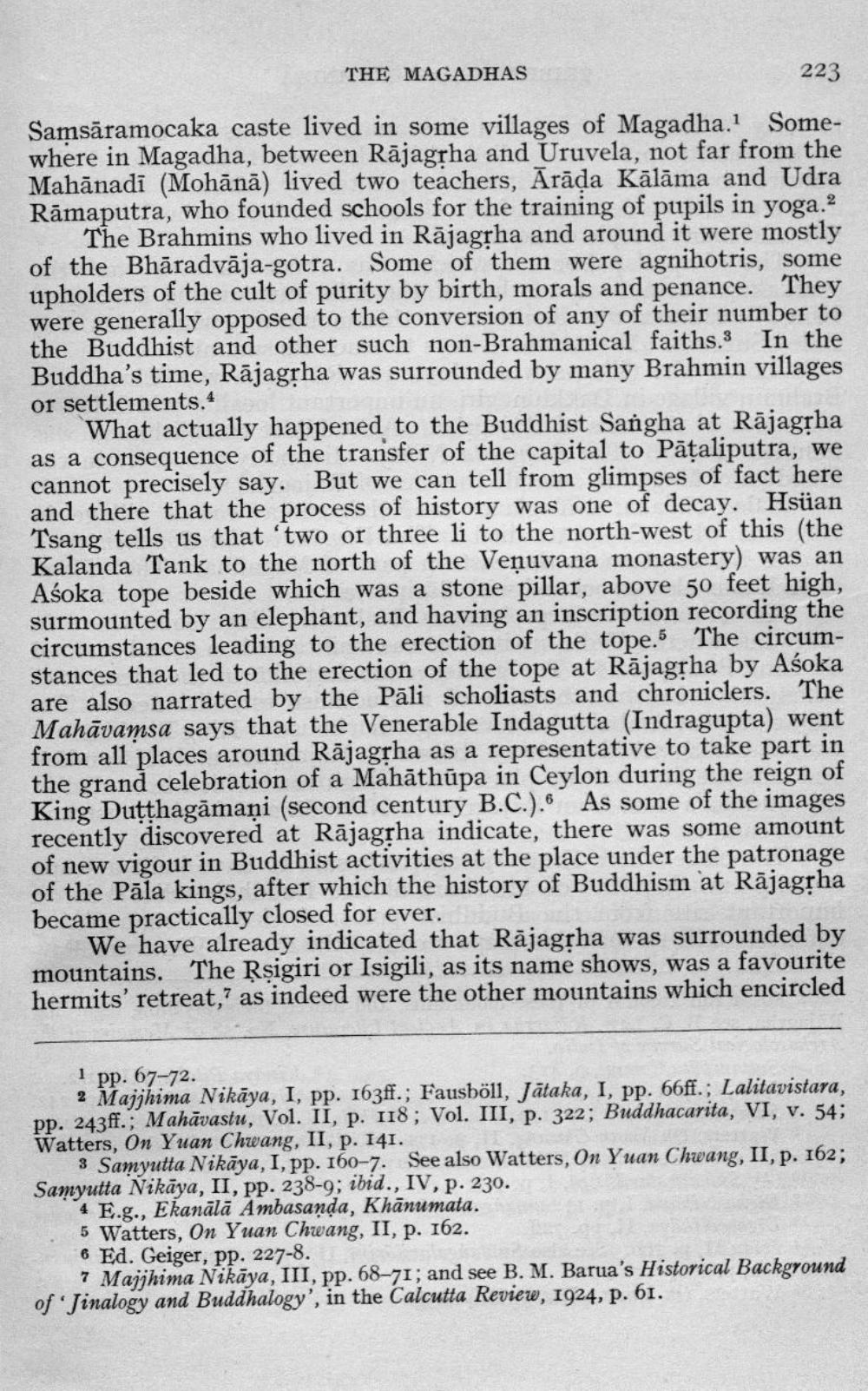________________
THE MAGADHAS
223
Samsāramocaka caste lived in some villages of Magadha. Somewhere in Magadha, between Rājagtha and Uruvela, not far from the Mahānadi (Mohānā) lived two teachers, Ārāda Kālāma and Udra Rāmaputra, who founded schools for the training of pupils in yoga.2
The Brahmins who lived in Rājagrha and around it were mostly of the Bhāradvāja-gotra. Some of them were agnihotris, some upholders of the cult of purity by birth, morals and penance. They were generally opposed to the conversion of any of their number to the Buddhist and other such non-Brahmanical faiths. In the Buddha's time, Rājagrha was surrounded by many Brahmin villages or settlements.
What actually happened to the Buddhist Sangha at Rājagrha as a consequence of the transfer of the capital to Pātaliputra, we cannot precisely say. But we can tell from glimpses of fact here and there that the process of history was one of decay. Hsüan Tsang tells us that 'two or three li to the north-west of this (the Kalanda Tank to the north of the Venuvana monastery) was an Asoka tope beside which was a stone pillar, above 50 feet high, surmounted by an elephant, and having an inscription recording the circumstances leading to the erection of the tope. The circumstances that led to the erection of the tope at Rājagrha by Aśoka are also narrated by the Pāli scholiasts and chroniclers. The Mahāvamsa says that the Venerable Indagutta (Indragupta) went from all places around Rājagrha as a representative to take part in the grand celebration of a Mahāthūpa in Ceylon during the reign of King Dutthagāmaņi (second century B.C.). As some of the images recently discovered at Rājagrha indicate, there was some amount of new vigour in Buddhist activities at the place under the patronage of the Pāla kings, after which the history of Buddhism at Rājagļha became practically closed for ever.
We have already indicated that Rājagrha was surrounded by mountains. The Rsigiri or Isigili, as its name shows, was a favourite hermits' retreat, as indeed were the other mountains which encircled
1 pp. 67-72.
2 Majjhima Nikaya, I, pp. I63f.; Fausböll, Jataka, I, pp. 66ff.; Lalitavistara, pp. 243ff.; Mahāvastu, Vol. II, p. 118; Vol. III, p. 322; Buddhacarita, VI, v. 54; Watters, On Yuan Chwang, II, p. 141.
3 Samyutta Nikāya, I, pp. 160-7. See also Watters, On Yuan Chwang, II, p. 162; Samyutta Nikāya, II, pp. 238-9; ibid., IV, p. 230.
4 E.g., Ekanālā Ambasanda, Khānumata. 5 Watters, On Yuan Chwang, II, p. 162. 6 Ed. Geiger, pp. 227-8.
7 Majjhima Nikāya, III, pp. 68-71; and see B. M. Barua's Historical Background of Jinalogy and Buddhalogy', in the Calcutta Review, 1924, p. 61.




